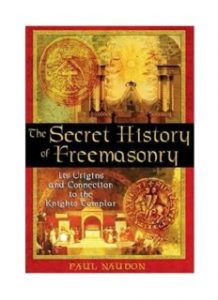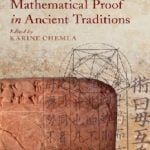The Secret History of Freemasonry
The Secret History of Freemasonry I state with all modesty, and without presuming to underestimate the value of preceding works on the subject, that to date there has been no truly a scientific history of the origins of Freemasonry and that such a study is totally justified.

The Secret History of Freemasonry PDF
Introduction
To find the origins of Freemasonry, it is important first to isolate its original characteristics, which can be found in the institutions from which it appears to have emerged:
1. It was a professional builder—or, more precisely, construction—organization; the long-ago vocation of Mason does not correspond directly to the modern specialization but includes extensive knowledge of architecture. The organization was represented hierarchically.
2. The organization extended beyond a strictly professional framework. Its members considered themselves brothers and provided mutual assistance.
3. The association, in both its operations and assistance, followed traditional rites. Members were accepted into it through initiation and the brothers were united by sacred practices that were illustrative of asceticism, an indispensable condition for the realization of the work.
4. The association accepted members who were not practitioners of the trade.
5. The association displayed and highlighted its character of universalism.
This study of Freemasonry looks at both its specific history and the influences and events that have left their imprint over time on its formation and evolution. As such, it includes an examination of various spheres—social, juridical, religious, and philosophical—that have conditioned these events.
From a chronological perspective, the most certain sources of Freemasonry have emerged as the following:
1. The Roman collegia, the remnants of which remained in the West following invasions and survived in the East as institutions discovered by the Crusaders at the end of the eleventh century.
2. The ecclesiastical associations of builders formed by the bishops of the early Middle Ages, especially the Benedictines, the Cistercians, and the Templars.
3. Trade-based freemasonry, which was born under the aegis of these associations and followed the form of lay brotherhoods or guilds.
Disclaimer:- Dev Library is not the owner of the books and neither does it create books. We just provide the links to the book for the rural and poor students who can’t afford to buy books. Those E-Books and PDFs are already available on the internet. For any reason, if someone thinks that I’m violating any laws or if anyone has any issues regarding this, please feel free to Contact Us.

Hi, I’m Dev Kirtonia, Founder & CEO of Dev Library. A website that provides all SCERT, NCERT 3 to 12, and BA, B.com, B.Sc, and Computer Science with Post Graduate Notes & Suggestions, Novel, eBooks, Biography, Quotes, Study Materials, and more.









